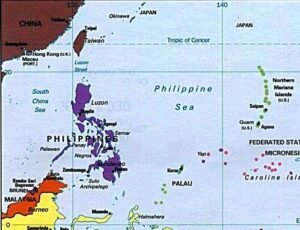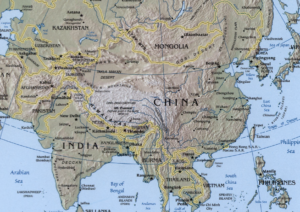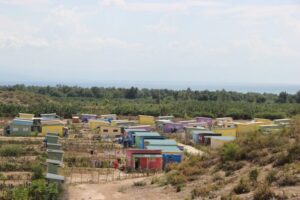China is Africa’s main trade and economic ally today, with several projects for the region’s socioeconomic development through its “Belt & Road Initiative” (The New Silk Road).
Bringing several infrastructure constructions to countries, developmental projects allow to establish great geopolitical relations of “debt” and exchange, in which investors gain freedom to charge “favors” to nations that depend on their investments.
This is part of international relations and more countries will copy the strategy of major developmental projects such as the Belt & Road of China to increase their international alliances and realize their interests worldwide.

What are International Development Initiatives
International development investment projects have always been present mainly among economic and political allies, where a country creates funds, installs companies or makes commercial agreements in the construction of the infrastructure of another country with the objective of bringing more growth to the society of this second actor.
These exchanges are not only executed between nations, there are several international financial organizations and institutions (Ifis) that were created exactly for the purpose of providing money to countries and their internal development, such as the International Monetary Fund (IMF), World Bank, Latin American Development Bank (CAF); European Investment Bank (EIB) among several others.
When establishing the investment agreement, a relationship is established between the countries and institutions involved.
Normally, what attracts and drives the creation of these ties in development are the trade that may establish, whether it is a cheaper sale of raw materials or establishment of international companies in the country that will produce profit.
China’s Belt and Road Initiative (BRI) is China’s largest global development project strategy. Its success has caused many countries to launch their own international development strategies to try to mimic the BRI and not lose relevance and international influence, such as Global Gateway of the European Union and the B3W “Build Back Better World” from the United States.
What is the “Belt & Road Initiative” – BRI – Chinese (New Silk Road)
The “Belt and Road Initiative” (BRI) was launched in 2013 by China, also known as the “New Silk Road”, resuming relationships with countries on the old Indo-Pacific sea routes through Southeast Asia to South Asia, the Middle East and Africa.

The strategy aims to build a market for economic and cultural exchanges within international relations to solve an “infrastructure gap” that the countries in which it operates have in relation to the centers of the international market and bringing economic growth throughout its area.
BRI has a budget of 4 to 8 trillion dollars, with the prospect of boosting world GDP by US$7.1 trillion per year by 2040, according to 2019 economic study.
The main Chinese projects in the African continent
Within the Belt & Road Initiative there is a specific arm on the various Chinese investments and projects in Africa, the Belt & Road Africa launched in 2018.
The Sino-African partnership has been growing in recent years, being China the main trade ally of African countries today. But their relationship was already getting closer even before the announcement of the BRI, with cheaper African metal and concrete exchanges for Chinese production.
Africa is a supplier of more than 3% of the oil that China imports, as well as 20% of the cotton. The continent has several basic natural raw material resources that are needed by industry, and China is seeking to reach them further.
China has been providing support for the growth of energy, telecommunications, in the construction of roads, bridges and ports, and in the development of human production capacity in 42 countries in Africa:
- Built railroads in Kenya, Ethiopia, Angola, Djibouti and Nigeria, with the Kenya railway costing about US$9 billion to the Chinese government.
- Angola closed a US$10.6 billion construction agreement for the Caculo Cabaca hydroelectric plant for 2172 MW in 2017. Guinea also has a hydroelectric project with 75% Chinese investment, about US$598 million.
- Ghana accepted US$ 23.6 million Chinese for the exploitation of Bauxite, ore from aluminum.
- Nigeria and China closed agreement on construction of the Edo State Oil Refinery.
- Zambia and China have closed several projects, one of them being the Chinese National Building Material, a Chinese cement factory within the African territory, which cost about US$500 million.
- China built the headquarters of the African Union and the Economic Community of African States West, which cost US$31.6 million.
- China has signed the construction of new parliamentary for Zimbabwe.
- Closed investments in the “Special Economic Zone of the Republic of the Congo” and in the “New City of Egypt” for growth and construction of residential, industrial districts, schools, universities, leisure centers and so on. It is part of the China Fortune Land Development.
These are just a few examples of China’s projects in Africa, with more than 23 billion renminbis already invested. There are around US$9 billion of Chinese investment per year in Africa.
The budget alone already exceeds by more than 8 billion dollars that other development finance actors have had in Africa, including the World Bank, the African Development Bank, the United States and the European Union.
BRI on Africa aims to make the continent an economy of US$5 trillion, reaching 19% of the world’s GDP. Are they looking for a 3.8% annual growth in domestic consumption to achieve the goal of a representative economy of US$2.1 trillion.
China’s investments are urbanizing, developing the African continent and taking it to the “4th industrial revolution“. The African region was named 2nd fastest developing region currently and this is due to this major investment of the Asian power.
How International Development Projects are the new Geopolitical weapon of the great nations
In 2017, Trump established that he would only provide development support to his political allies, using developmentalism as a currency. However, this exchange of favors for investments is nothing new in international relations. Trump only reinforced and abused a system that already existed “behind the curtains of international diplomacy.”
The relationship of the American competition with China has strengthened this character of development projects, putting countries to commit internationally or to one or the other, and depending on the choice, be ready to lose part of the relationship with the nation that was not chosen.
For example, Sheba Crocker vice-president of humanitarian policy and practice in CARE International for a Devex, says that there is a “politicization of the provision of humanitarian assistance” in the geopolitical scenario.
While the major central actors, such as the US, the European Union and China, invest in other countries, there is a charge for supplying cheap raw materials, political support, greater ease in economic exchanges and various aspects that alliances can bring. In this way, the growth of a developing country is used in exchange for the own growth of the central actors.
The “commitment” to the development of other nations that are not the economic centers is directly linked to the elections, the powers and the strength of multilateral institutions to mediate and resolve disputes.
The Chinese BRI has attracted more than 150 countries and international organizations because it is filling a space of geopolitical power left by international financing that has moved away from infrastructure investment in recent decades.
China, unlike the IFIs, responds to the needs that the countries that are undergoing the investment place, understanding the vision of the national demands of governments, which gives more strength and resilience to projects such as the BRI.
However, critics comment that Chinese projects in Africa are executed with negligence, without hiring sites and accumulate a “debt” ratio, the so-called “Debt traps“. China is responsible for 15% of Africa’s debts:
- Zambia owes US$10.3 billion during the 2000-2010 period and only having paid US$1.2 billion;
- Uganda owes US$200 million because of the construction of its only international airport;
- Kenya received Chinese loan of US$4.5 billion for railways, but are renegotiating the term and payment value after construction losses and debt overload;
These are some African examples of debt with China and what many say is that, because they are in this situation, there is a possibility of a takeover of the infrastructure properties built by the Chinese government.
The “Debt traps” would be part of the planning and operation of the Belt & Road Initiative and the global investment that China is carrying out, however the country denies any second intention outside socioeconomic development, saying that instead of confiscating the properties they will extend the payment deadlines.
There are some other problems with BRI projects. While there is concern on the part of most countries that invest in development projects with the possible we give to the environment in this process, China is known not to care so much about the sustainability of its overseas projects.
Even so, the BRI is a great example of the importance that development projects have in the establishment of political and not only economic relations, since investments in infrastructure also consolidate a Chinese influence in several countries.
By gaining influence, there is the gain of geopolitical power and the possibility of implementing its interests in the international community with greater support and stability.
The Future Trend of Geopolitics in Global Development
The construction of relations of exchange and submission from the projects of global development are part of the geopolitical and economic game and the propensity is that this only grows in the next decades. The development of global infrastructure investment strategies such as the Global Gateway of the European Union and the B3W “Build Back Better World” from the United States to rival China’s BRI, demonstrate this growth.
With the need for a global change regarding production and climate impacts, for example, nations will invest more so that other countries make the transition to clean energy but, in return, they will gain a leading role in the advanced production of sustainable energies and influence in the country in which they invest hundreds of millions or even billions of dollars.
Global development projects are within the framework in which international relations operate, where investments in infrastructure projects are used as currencies of trade and politics.
This “exchange of favors” is what gives geopolitical power to each nation that has the ability to invest in projects abroad. So we’ll see more countries scrambling to invest in places like Latin America, the Middle East and Africa so they can increase their geopolitical influence around the world.













[…] purpose of increasing economic relationships with countries on the South of Asia, Middle East and North Africa, the Chinese government intends to invest about US$4 trillion (about US$1 trillion has already been […]
[…] China’s Belt & Road Initiative, global developmental projects have gained momentum in the geopolitical landscape as a way to gain […]
[…] which follows Chinese interests in the regional conflict. However, China says that this is just a project for the economic development of the archipelago, which can mean one of the cases of Dept Trap (debt […]